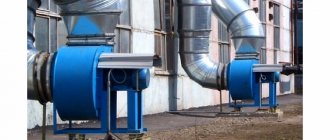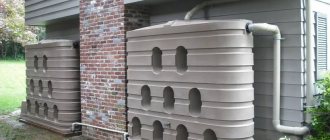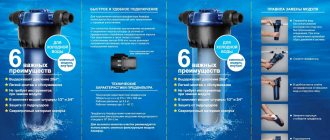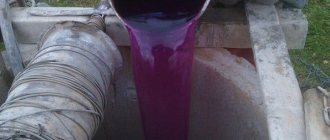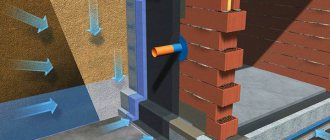The organization of plumbing is integral and one of the most important details of planning and building a house. You should start from the place where the supply already exists. This could be a central main pipe, a water tower, a pumping station, or a source located in close proximity.
In the first case, you need to connect to an existing network, the water in which has already undergone special treatment. If you have an autonomous water supply, before consumption you need to do a laboratory analysis of H2O and, if necessary, install water filters.
Where to start organizing a water system at home? Calculations and plan development
If you decide to connect to the central water supply unit, then you should take a number of measures:
- Apply to the Vodokanal utility service in your region;
- Receive technical specifications for the connection and an estimate for connection;
- Then wait for the workers, monitor the installation work and test the system.
Such a plan is easy to implement, simple to implement and will require virtually no effort from you. The situation is different if it is necessary to organize an autonomous method of water extraction. In this case, there is no need to obtain or have special permits and papers, but it is necessary to carry out calculations, develop a high-quality plan, and prepare the liquid for safe consumption.
Before installing a water network, it is necessary to calculate the amount of future consumption, optimal pressure, power of pumping equipment and draw up a detailed plan or wiring diagram, taking into account sewerage, laying pipes around the site and indoors.
Basic composition of the plumbing system:
- sources;
- pipelines;
- pump, hydraulic accumulator, automatic relays;
- filters for cleaning;
- plumbing accessories and appliances;
- sewerage and heating equipment.
Design of water supply and sewerage
engaged in the design of engineering systems. One of the priority areas of our work is the development of projects for water supply and sewerage systems.
Individual water supply and sewerage in a house, apartment, office, restaurant... this is an opportunity to organize an engineering system that will work properly in any conditions. Our design is a high-quality and competently compiled package of documents that will easily allow you to quickly install the system.
Example of a water supply and sewerage project for a house
Back
Forward
Selecting sources for organizing autonomous water supply
Well
A well is the most cost-effective option for organizing water supply. Its use is appropriate provided that the water deposits are located at a depth of no more than 15 m. However, due to the shallow depth, the liquid can be contaminated with groundwater and will require powerful cleaning.
The advantages include comparative ease of installation, durability (up to 50 years) and the ability to use the old method of extracting liquid with a bucket, subject to a power outage.
Artesian well
The quality of water resources becomes higher with greater penetration into the ground, due to the absence of groundwater polluting sources at great depths. An artesian well can reach a depth of up to 250 meters, down to limestone rocks.
The productivity of such an installation is high enough to provide water intake to several houses at once, which allows owners to unite to reduce the cost of work. Although this is not a budget option, it is quite worthwhile, thanks to its large volumes and long service life, measured in decades. The high cost is also due to the fact that in such a scheme it is necessary to have a powerful pump that allows you to raise the liquid to a great height.
Abyssinian well
This is a shallow well, allowing you to use the source at the minimum possible depth.
The method is easy to implement. To do this, you need to determine the location using the “needle hole”, hammer in a pipe with a sharp tip and a filter at the bottom, install a check valve and a manual or automatic pump. The diameter of the pipe directly affects the performance of the installation.
Among the advantages can be noted - a large amount of water product, its purity, service life of up to 30 years, the ability to connect a pump and compactness. The disadvantage is the small depth of burial (up to 15 m) and, as a consequence, dependence on climatic conditions and soil composition.
Well on sand
The sand well has a depth of 15 to 30 m. The sampling is carried out from the upper sandy layers of the earth. It is believed that this water is the purest due to its passage through sand.
The main advantage is considered to be ease of execution, thanks to which you can equip such a well yourself, without the involvement of specialists.
Personal mini-reservoir
These are several stainless or plastic tanks installed in the ground and connected by pipes. This circuit requires the use of a pump.
Cottage water supply equipment
If a water supply system from a well or borehole is being designed, then, first of all, the type of alluvial equipment is determined. For a well, deep and surface models are used; for a well, submersible and surface models are used. The latter are installed on the surface next to a well or borehole, hence their name. The latter are lowered into the hydraulic structure.
Submersible ones are installed at a shallow depth - not lower than 10 m. Deep ones can be lowered to 200 m. Therefore, their design is more powerful and airtight.
How to calculate pump power
The calculation is based on the number of plumbing fixtures in the house and their performance. For example:
- kitchen sink – 12 l/sec;
- washbasin – 12 l/s;
- shower – 0.25 l/sec;
- toilet - 0.1 l/sec.
Here you must definitely add taps located in the yard and used for watering the garden. Their consumption is 0.3 l/s.
The total value of all plumbing fixtures is the performance of the installed pump. But this type of equipment has one more important parameter - pressure. It determines how far or how high the pump can deliver water. This is an important parameter because the water intake is installed from a depth. For example, if a well is drilled to a depth of 20 m, then the pressure of the selected pump should not be less than this value.
Based on the two obtained indicators, you can select the required pump from the catalog. It is clear that the higher these two characteristics, the more expensive the pumping equipment. For example, deep models are the most expensive:
| Pump brand | Flow, m3/h | Head, m | price, rub. |
| Grundfos SQ 3-105 | 4,4 | 147 | 65000 |
| Waterstry SPS 7025 | 18 | 163 | 94000 |
| Waterstry 3ST 2- 90 | 2,8 | 116 | 13000 |
| Grundfos Package SQE 5-70 with frequency control | 8 | 106 | 115000 |
Additional type of equipment for autonomous water supply
Since water from wells and boreholes is not always clean, it is therefore very important to take care of its purification. Today, filters for various purposes are used for this, providing different degrees of purification. Usually these are coarse and fine filters. The former retain large impurities (sand, pebbles, etc.), the latter - small ones. They are installed in this sequence.
In addition to these types of filters, there are others:
- for water softening;
- for ionization;
- for disinfection.
Another element of an autonomous water supply network is a storage tank. Its purpose is to store water in case the electricity supply is cut off in a country village, which happens quite often. In such a situation, the pumps will not be able to work, and water will be supplied to the network from this tank. Its volume depends on the parameters of water consumption by the residents of the house. Usually in a small cottage a plastic container with a volume of 1 m3 is installed.
As for the location for installing additional equipment, it is best to use a utility room - a basement, a separate room isolated from living quarters. The main thing in the project is to take into account that the distance from the well or well to the internal water supply network should be as short as possible.
Water purification systems and their types
If the resulting water turns out to be unsuitable for use, it is necessary to install special purifiers. The action of each of them is aimed at eliminating certain problems:
- increased H2O hardness or iron content;
- pollution with silt or sand;
- the presence of harmful bacteria or industrial pollution, if the house is located near production.
Equipment used for water treatment
Reverse osmosis
In this method, water obtained from a source at the molecular level passes through two very thin membranes, which allow only H20 and oxygen to pass through without impurities. This method softens and purifies it from impurities and microorganisms, but requires mandatory preliminary water purification using a sorption or coarse filter.
Filters for cleaning mechanical impurities
Such purifiers act on reactions associated with oxidation, as a result of which iron precipitates and is filtered out. Their variety is represented by several types: cartridge, mesh and backfill.
In mesh ones, a special fine-mesh mesh is used and the cleaning process can be automated. Cartridge ones are more suitable for small consumption volumes and small flows. Load filters are large containers with different filter compositions and are equipped with a device for regulating filtration parameters. This type is the most versatile and easiest to use.
Softening system
The simplest is a filter that contains activated carbon. It is designed to remove dissolved gases, remove chemical components and organic compounds.
This type effectively cleans due to the special properties of coal, due to the absorption of harmful substances, but has a big drawback - the coal is quickly washed out and cannot be restored.
Disinfection systems
Microorganisms and bacteria harmful to human health are usually destroyed through chlorination. Today, instead of using chemical components, more and more people prefer to remove bacteria using UV (ultraviolet) filters. Unlike chlorine, ultraviolet cleaning does not affect the taste. The process is silent, and the lamps do not require replacement.
Designing a water supply system in a private house
There are three approaches to developing a plan:
- Connect to the central water supply network.
- Organize water supply from a well.
- Organize water intake from a well.
In the first case, when designing, you need to obtain permission to connect to a water pipe. The local water utility must provide a connection point from which a water supply line will need to be installed to the house. It is in this place that a well is installed, into which a valve or valve is installed, a water flow control meter, and a coarse mesh filter in front of the water meter.
The basic rule for laying a water pipe to a house is to find the shortest path without bends. More recently, there was another requirement: the laying of the pipe network must be below the freezing level of the soil. Today it is not necessary to do this, because a water pipe can be insulated, and the modern building materials market offers a huge variety of different types of insulation.
Since the pipe is inserted either through the foundation or through the wall of the house, therefore in these structures of a private house it is necessary to provide a through opening, which is formed, for example, by a polymer pipe.
The most modern methods of water purification
The latest methods are gaining increasing popularity, capable of providing filtered liquid in large volumes for household and drinking needs without special operating costs. Of these, it is worth noting:
- Air aeration. There is pressure and non-pressure. This method is based on oxygen enrichment, due to which manganese and iron sink to the bottom.
- Electrochemical aeration. A budget-friendly, compact and virtually silent method of cleaning. Based on electrochemical reactions with the release of ozone and oxygen. Effective for purifying liquids rich in iron.
- Ion exchange filters . An ion exchange resin in several reservoirs, when water passes through it, retains calcium and magnesium ions and allows sodium ions to pass through, which allows salts to be separated from the liquid and softened. Over time, the amount of sodium in the resin decreases and requires restoration - this is the main disadvantage of this cleaning method.
Manufacturers
There are many companies on the market that are developing cleaning methods. Among them are:
- "Ecodar";
- “Voder” - comprehensive cleaning;
- drinking: “Atoll”, “GE Merlin”, “Aquafilter”;
- ultraviolet sterilizers “Lazur”, “Steriling”, “UDV”, “Blex”;
- mechanical filters “Honeywell”, “AZUD” and many others.
Choosing a heating system
So where do you start when choosing a heating system for your home?
Nikolay Prolezhaev:
– It all starts with identifying the energy source. Most often this is natural gas. If there is no gas, then there are many options:
- Solid fuel;
- Liquefied gas;
- Diesel fuel;
- Electricity.
Let's take a closer look at each of the options.
- Gas heating.
It is one of the cheapest and most convenient types of fuel for heating a private home, since the process of its combustion in a boiler can be easily automated and controlled.
But all of the above is true only if the gas pipe is already connected to your house, so the price of connecting gas or laying a pipeline may turn out to be unreasonably high.
- Solid fuel. Despite the availability of coal, firewood or peat briquettes, it should be remembered that solid fuel boilers require regular fuel supply, and their operation process is difficult or impossible to automate, which directly affects the level of living comfort in the house.
Solid fuel boilers are often installed as a backup heat source in case of shutdown or breakdown of the main boiler. Also, when installing them, increased demands are placed on the chimney, otherwise the draft necessary to remove combustion products will not be created.
- Electricity. It is considered one of the most expensive types of heating, but has such advantages as convenience, high operating efficiency and ease of equipment installation. When installing an electric boiler, there are no such stringent requirements as when using a gas or solid fuel boiler. There is no need to make a special boiler room and chimney. Electric boilers are relatively cheap, compact (they can be hung on the wall) and are silent in operation.
When choosing an electric boiler, you must remember that often only three-phase boilers with a power of more than 12 kW/380 volts are suitable for heating a house, and not all areas have a dedicated three-phase line of 15 kW or more. A single-phase electric boiler with a power of less than 12 kW/220 volts is only suitable for heating a small and well-insulated house with an area of up to 100 sq.m.
- Liquid fuel. Diesel oil, fuel oil. Boilers operating on this type of fuel lend themselves well to automation. But due to the constant rise in energy prices, the use of a liquid fuel boiler requires proper calculation.
It is important to know that there are liquid fuel boilers with replaceable burners, which means that such a boiler can be easily converted to operate on mains or liquefied gas.
Previously, the boiler power can be calculated using the following formula: 1 kW of power is spent on heating 10 sq. m. of well-insulated room.
Nikolay Prolezhaev:
– The boiler is selected exclusively after a heat calculation, since the required power can only be determined by knowing the heat loss. Also, when designing, the basic boiler room system as a whole is selected. There are two main types:
Scheme with a double-circuit boiler. In this case, the DHW heat exchanger is located directly in the boiler. This scheme is used when 3-4 family members live.
Pros: Occupies a small area in the boiler room. The equipment is much cheaper compared to a system with an indirect heating boiler.
Cons: Low DHW production, sensitivity to water quality.
Single-circuit boiler with indirect heating boiler. In this case, a boiler is placed next to the boiler in which hot water is heated. The required volume is selected during design. This scheme is more comfortable and durable, since the hot water reserve allows the use of water for 5-6 consumers, and it is absolutely insensitive to water quality.
Anatoly Gurin:
– Before choosing a boiler and, accordingly, a heating system, you need to do a water analysis and find out whether the proposed boiler can work with it.
For example, wall-mounted double-circuit boilers cannot work properly with hard water, because... the heat exchanger becomes clogged with hardness salts and often requires flushing or replacement.
The best option for heating and water supply is a single-circuit boiler with an indirect heating boiler, free-standing or built-in.
Conclusions:
When installing a pipeline, it is better to use the services or consultations of specialists; calculating the necessary parameters yourself can be a difficult task, as well as choosing the optimal filter.
The most popular systems today are reagent treatment, which operate through oxidative reactions with pollutants, but require constant maintenance to remain effective. Reagent-free - considered modern, but quite expensive, as they require an air compressor.
A well-thought-out organization of water supply will serve more than one generation of residents of a country house and provide high-quality water, directly affecting the health of the entire family.
Did you find this article helpful? Please share it on social networks: Don't forget to bookmark the Nedvio website. We talk about construction, renovation, and country real estate in an interesting, useful and understandable way.
We equip the cottage sewer system
The sewage system of a private house consists of two parts: internal and external. The first one ties all the plumbing fixtures and goes through the foundation or wall of the cottage to the street. If the house is multi-story, then all pipework is installed on a vertical riser. If the house is large, then there may be several risers. They are connected in the basement and brought out from one point.
The external part is a pipe network connecting the house with a structure that ensures the collection and disposal (partial or complete) of sewage. Today, cesspools or septic tanks of various types and degrees of purification are used as a disposal system.
Internal sewerage
The internal sewerage project consists of a diagram indicating the installation points of plumbing fixtures, pipe sections, fittings, and riser (if there is one). The diagram must indicate the length of the pipe sections, as well as the diameter of the pipes.
The diameter depends on which plumbing fixture the pipe is diverted from:
- from a kitchen sink or bathroom sink – 32-40 mm;
- from a bath or shower – 50 mm;
- from a dishwasher or washing machine – 40-50 mm;
- from the toilet 110 mm;
- riser – 110 mm.
The main requirement for internal sewerage is the minimum distances from plumbing fixtures to the riser. In this case, the angle of inclination must be maintained - 2-3 mm per 1 m of pipe distribution length, since the sewerage system is a gravity flow system.
The project also indicates how the pipes are installed: open or closed. The first involves installation on clamps along the wall, the second involves installation in grooves (in the wall or floor), which are subsequently sealed with repair mortar. If the house has a basement, then the first floor sewer is often drained into it.
When designing a country cottage, architects try to arrange the premises so that the sewer riser is closest to the septic tank. In this way, the problems of saving materials are solved, plus the sewer system itself is shortened. The shorter it is, the more efficiently it works.
Sewerage markings K1, K2, K3
Each drawing indicates o and the number 1,2 or 3. The marking depends on the purpose of the sewerage system.
For a household system, “K1” is used, for a rainwater system – “K2”, for an industrial system – “K3”.
You cannot put symbols in the drawing that are not specified in the regulatory documents GOST 21.205-93 and SNiP 2.04.03-85 (SP 32.13330.2012). This is necessary so that workers can find the desired designation and correctly complete the work on the project.
The use of symbols according to the regulations allows you to achieve the normal functioning of the sewerage system for a long time. Owners of houses or apartments will not worry about problems in the utility network.


